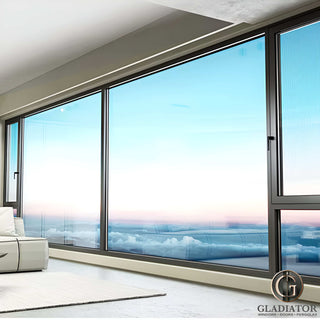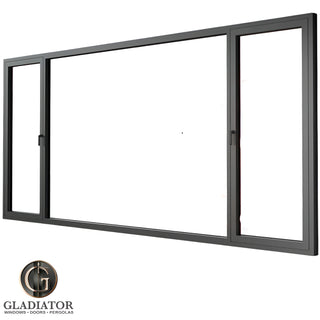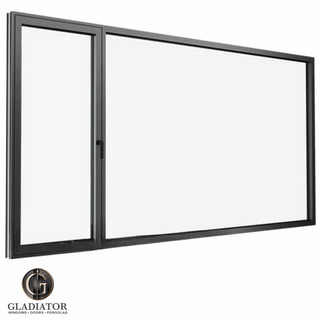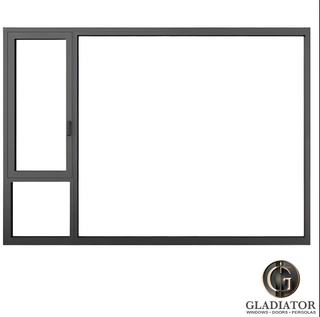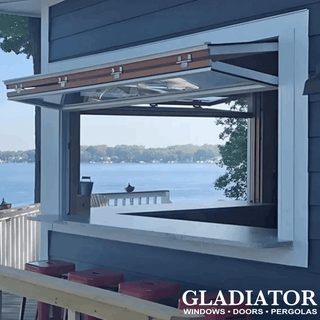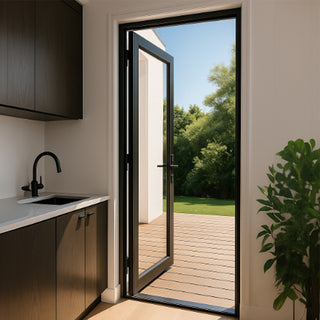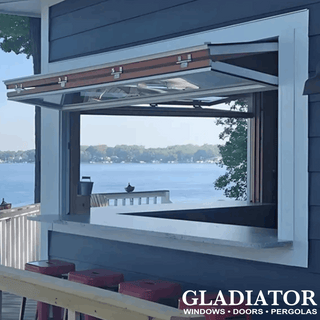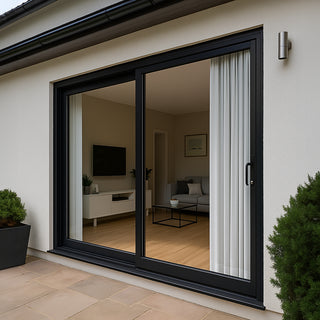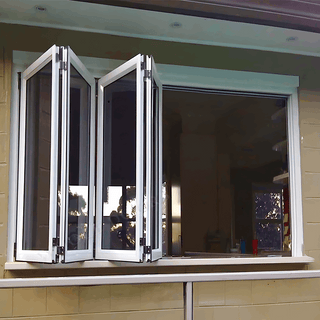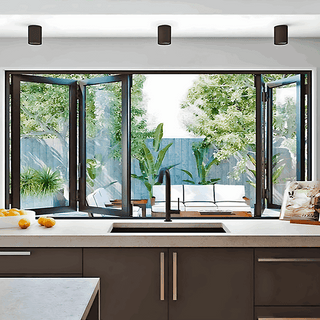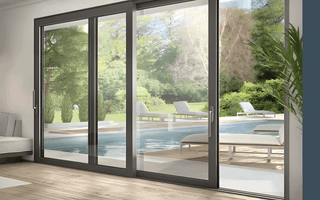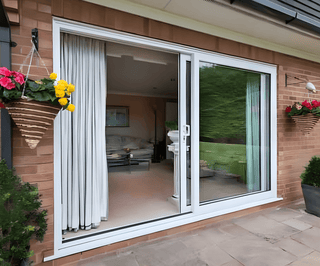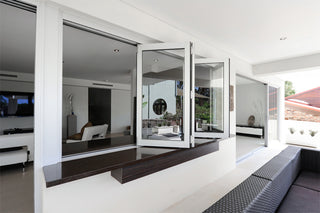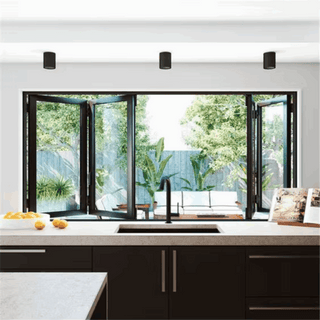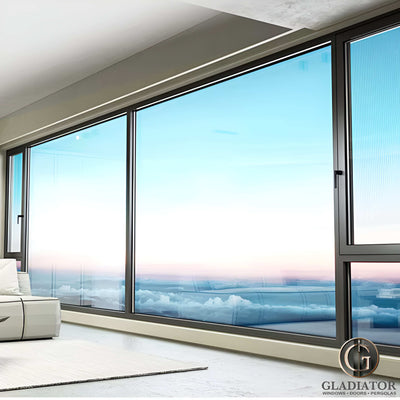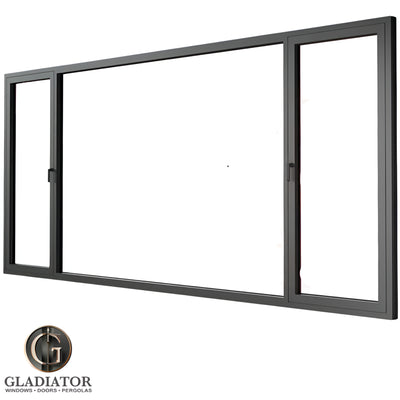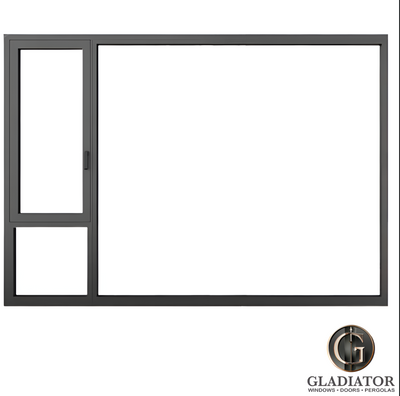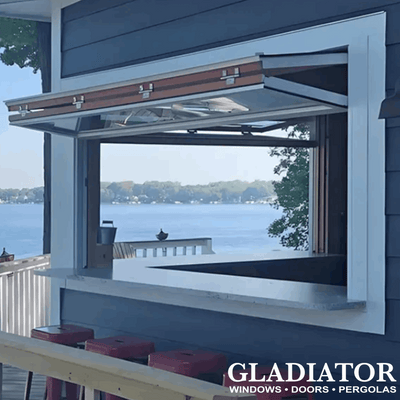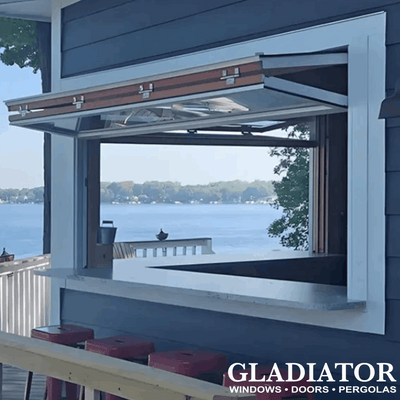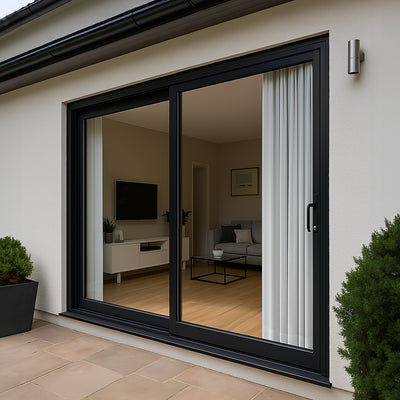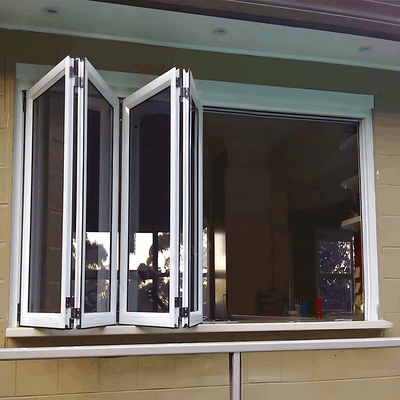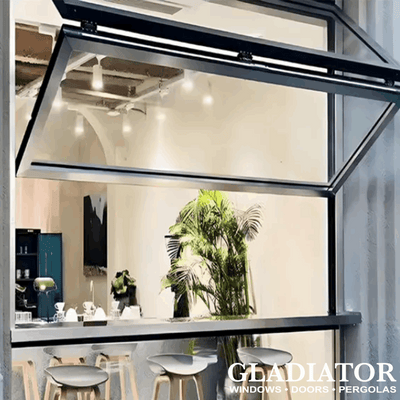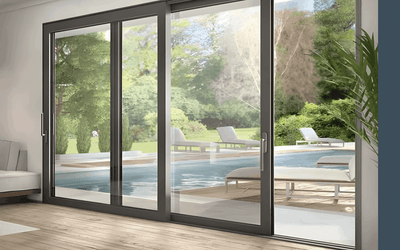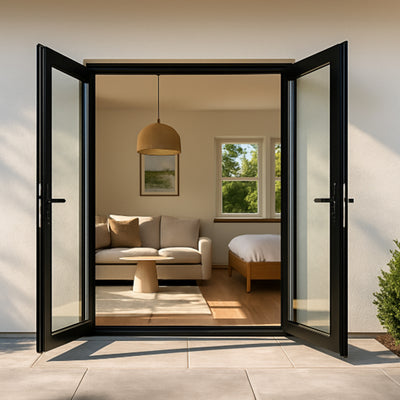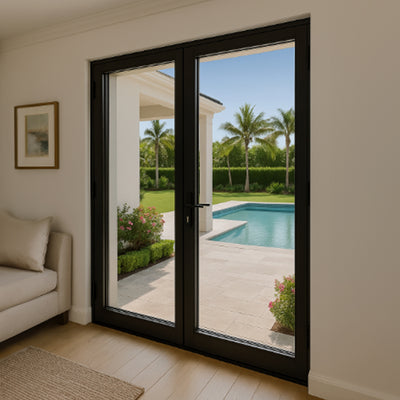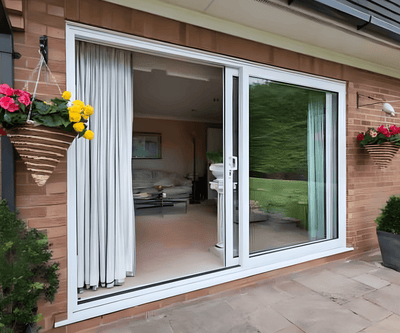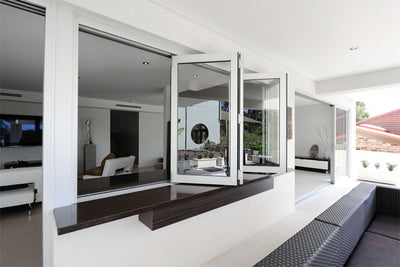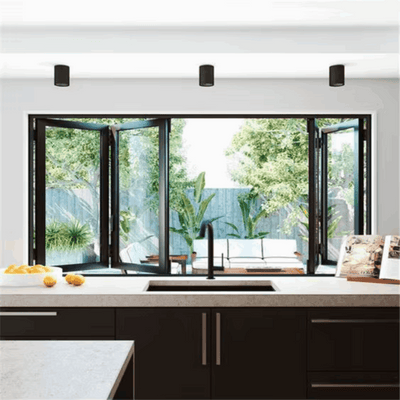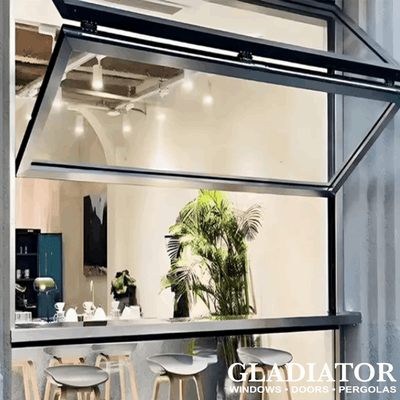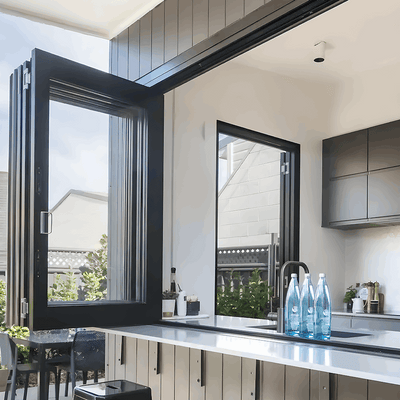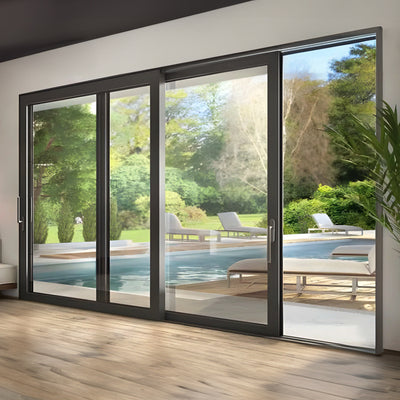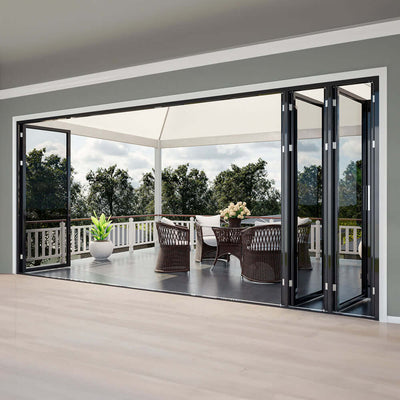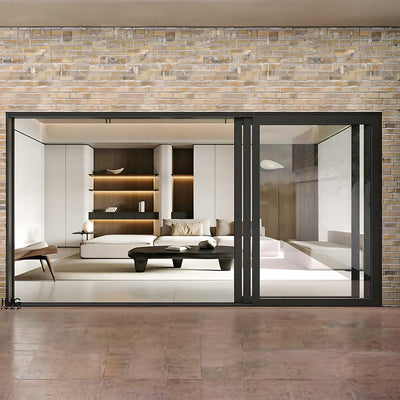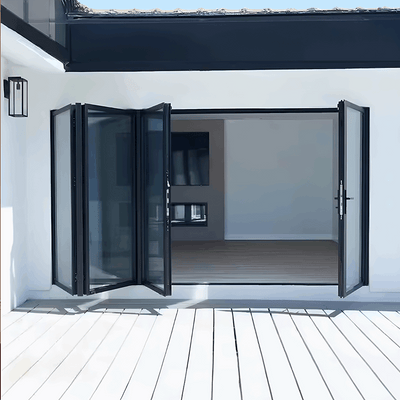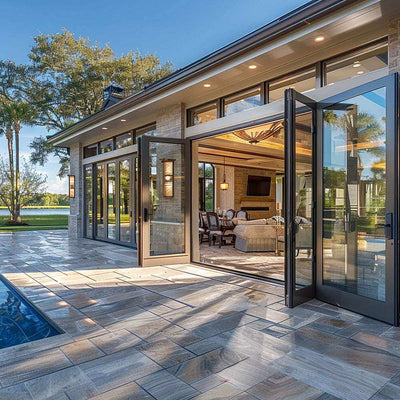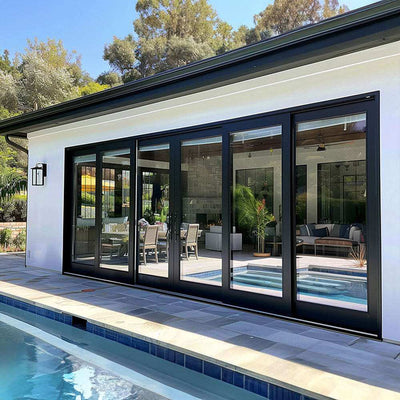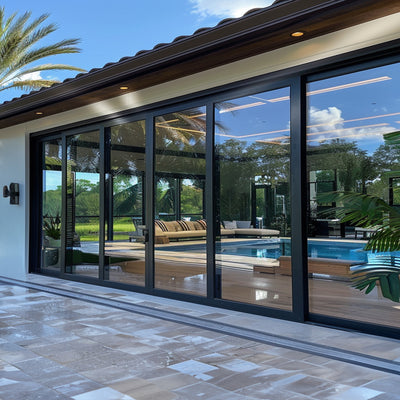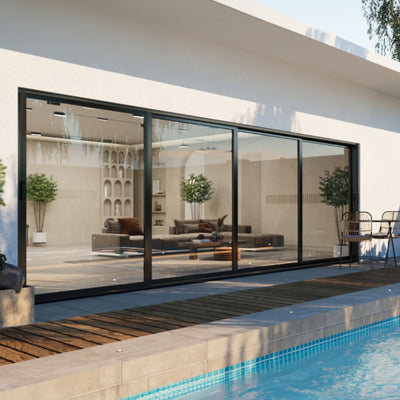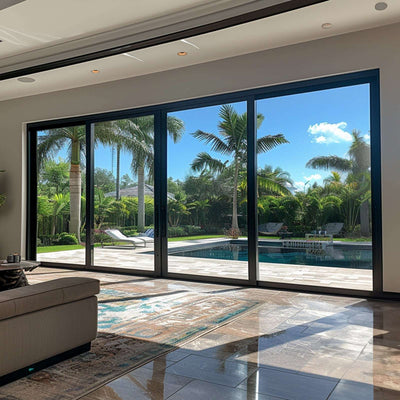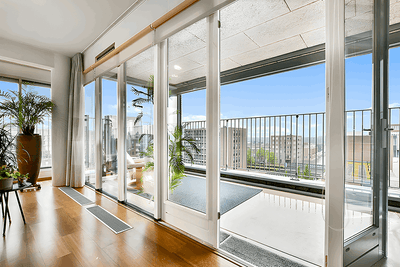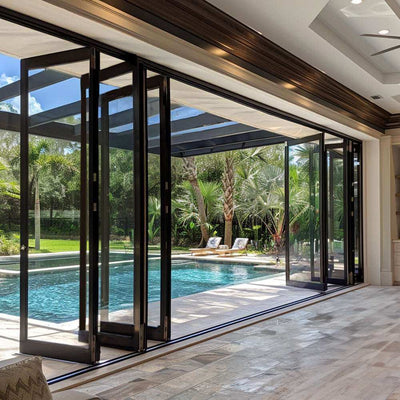The Science Behind Window Condensation: What You Need to Know
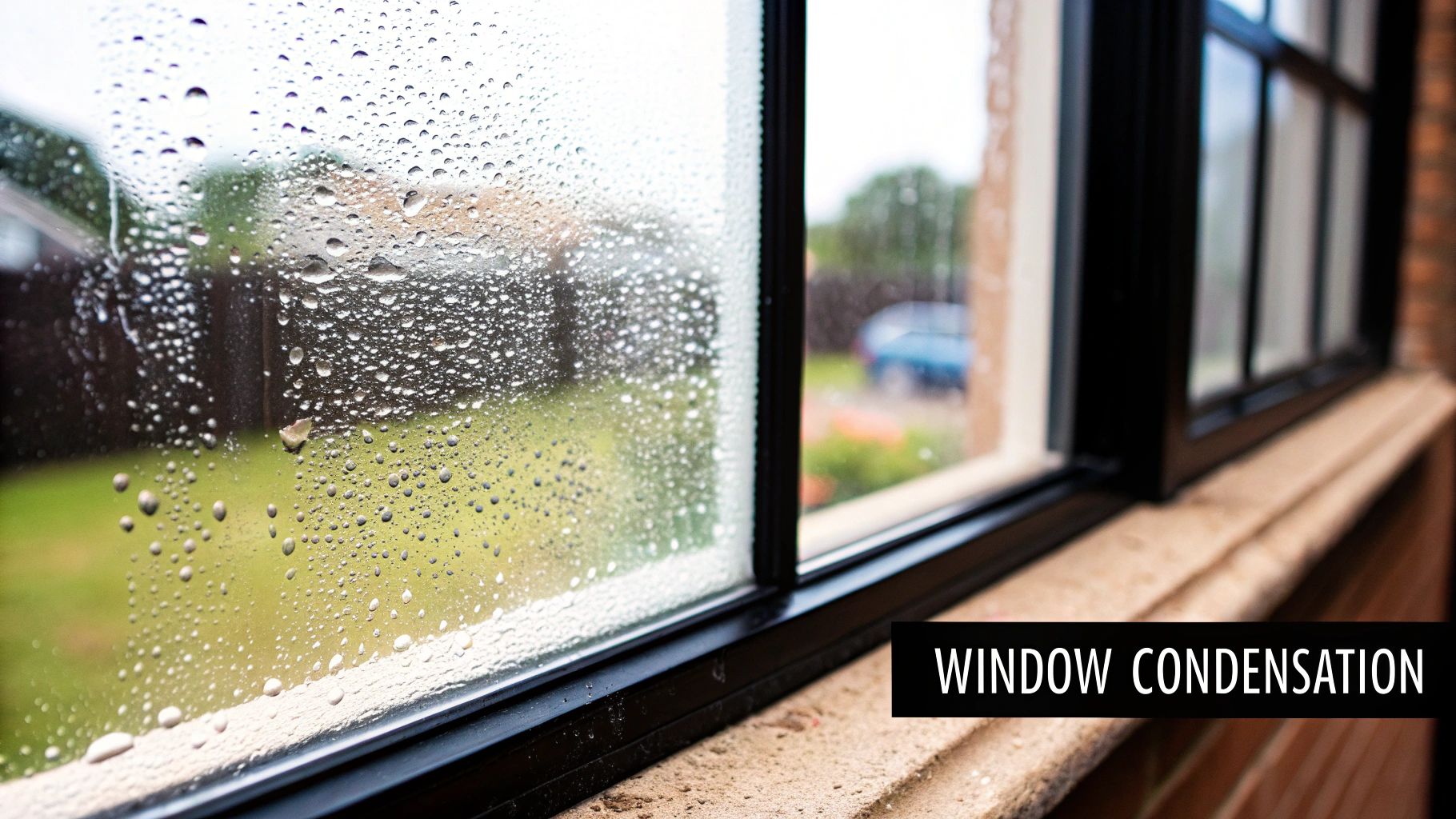
Window condensation, that familiar film of water droplets, happens because of a basic principle of physics: how temperature affects air's ability to hold moisture. Warm air holds much more moisture than cold air. When warm, moist air touches a cold surface like a window, the air cools down quickly.
This rapid cooling lowers the air's moisture capacity. The extra moisture then condenses, changing from water vapor (a gas) to water droplets (a liquid) on the window. This is the main reason why you often see condensation on windows in colder weather. This brings us to the dew point.
Understanding Dew Point and Relative Humidity
The dew point is the temperature where the air is completely saturated and can't hold any more moisture. It's like the air's maximum moisture limit. When the air temperature reaches the dew point, condensation forms. Relative humidity (RH), on the other hand, tells us how much moisture is currently in the air compared to how much it could hold at that temperature.
A higher RH means the air is closer to its saturation point, making condensation more likely. For instance, an RH of 100% means the air is totally saturated, and any drop in temperature will lead to condensation. This is a key factor in preventing window condensation. Learn more with this helpful article: How to stop window condensation.
Interior vs. Exterior Condensation: Spotting the Difference
Knowing where the condensation is – inside or outside – is essential to finding the cause and fixing the problem. Interior condensation, the most frequent type, forms in colder weather when warm, humid inside air meets the cold window surface. Everyday activities like cooking, showering, and even breathing add moisture to the air, making the problem worse.
Exterior condensation usually happens on warmer, more humid nights. The outside of the window cools below the dew point of the surrounding air, causing condensation. The anti-condensation coating market is seeing significant growth, valued at approximately USD 2.5 billion in 2021. This growth is driven by increased awareness of energy efficiency and sustainability.
These coatings prevent mold, corrosion, and material damage caused by condensation. Buildings account for nearly 40% of energy use in countries like the U.S. Find more detailed statistics here. This underscores the importance of dealing with window condensation, especially for energy-efficient homes.
Diagnosing Your Home's Unique Condensation Profile
Before tackling window condensation, it's essential to understand its root causes in your home. Just as a doctor diagnoses an illness before prescribing medicine, identifying your home's unique "condensation profile" is key. This involves pinpointing moisture sources and how they interact with ventilation and insulation.
Measuring Indoor Humidity
Start by accurately measuring your indoor relative humidity (RH) with a hygrometer. These handy tools are readily available. Ideally, indoor RH should fall between 30% and 50%. Consistent readings above 60% indicate a high condensation risk, especially on windows. However, excessively dry air (below 30%) can also create discomfort and other problems.
Room-by-Room Checklist: Uncovering Hidden Moisture Sources
Everyday activities often contribute to indoor humidity. A room-by-room assessment can reveal often-overlooked moisture sources. Consider these common culprits:
- Kitchen: Cooking, particularly boiling water, produces significant moisture. Using lids and running the exhaust fan can noticeably reduce window condensation.
- Bathroom: Showers and baths are obvious humidity sources. Run the bathroom exhaust fan during and after use, and consider extending its operation for complete moisture removal.
- Laundry Room: Drying clothes indoors, especially without proper ventilation, releases substantial moisture. Vent your dryer outdoors and ensure the vent is clear.
- Houseplants: Plants add beauty, but they also release moisture through transpiration. Grouping them or moving them away from windows can help manage this.
Identifying Ventilation and Insulation Issues
Insufficient insulation and poor air circulation exacerbate window condensation. Cold surfaces, such as poorly insulated walls or windows, provide ideal condensation points. Stagnant air traps humid air against these cold surfaces, worsening the issue.
Look for these signs:
- Drafty windows and doors: These indicate air leaks where warm, moist air escapes and contacts cold surfaces.
- Cold spots on walls or floors: These often signal inadequate insulation.
- Musty smells: This can suggest trapped moisture and potential mold growth due to persistent condensation.
By systematically evaluating humidity levels, moisture sources, ventilation, and insulation, you can create a targeted plan to prevent window condensation that addresses your specific needs. This tailored strategy will result in more effective and lasting solutions.
Modern Window Technology: Smart Investments That Actually Work
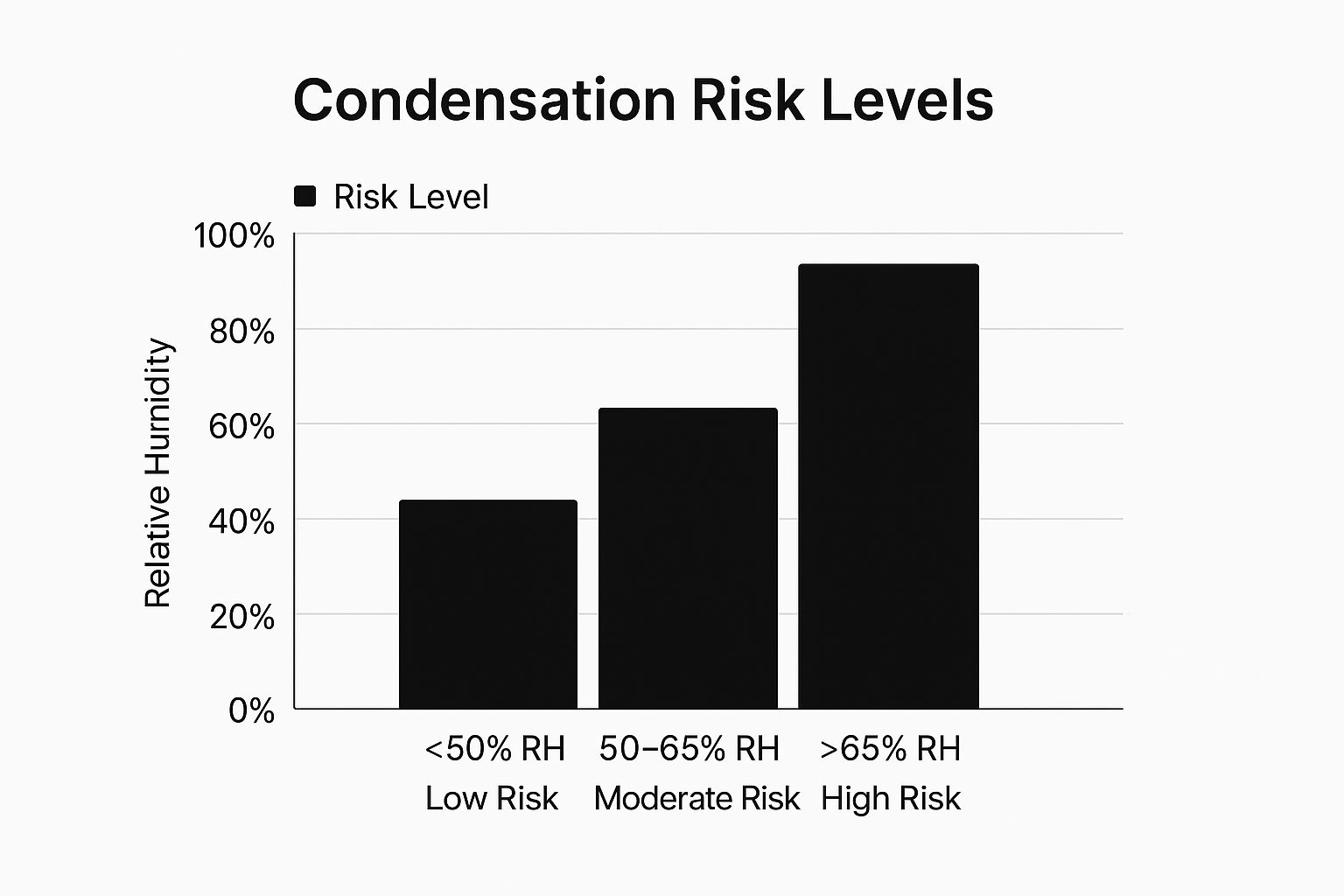
The infographic above illustrates condensation risk based on relative humidity (RH). Keeping RH below 50% significantly lowers the risk. However, even moderate RH (50-65%) can cause problems. This highlights the importance of humidity control, even in less humid climates.
Modern window technology provides lasting solutions to fight condensation. This means investing in windows designed for minimal temperature differences and improved thermal performance. Double-glazed and triple-glazed windows, especially with insulated frames, prevent rapid temperature changes. These windows maintain higher interior pane temperatures, preventing condensation.
The Power of Low-E Coatings and Gas Fills
Low-emissivity (low-E) coatings enhance condensation resistance. These coatings reflect heat back into the room, keeping the interior pane warmer. Low-E coatings work with gas fills like argon or krypton. Sealed between panes, these gases add insulation, much like a down-filled blanket traps heat.
Interested in upgrading? Upgrade Today with Energy-Efficient Window Replacement Solutions. The Condensation Resistance Factor (CRF) is important when selecting windows. A higher CRF means better condensation resistance, crucial in climates with large temperature swings. The energy-efficient window market is growing, expected to reach USD 18.3 billion by 2026, with a CAGR of 7.0%. This growth is driven by sustainable building practices. Explore this topic further.
Evaluating Your Options: Choosing What’s Right for Your Home
To help you make the right decision, consider the following table:
Energy-Efficient Window Types and Their Condensation Prevention Benefits This table compares different types of energy-efficient windows and their effectiveness in preventing condensation.
| Window Type | Condensation Resistance Rating | Energy Efficiency Rating | Average Cost | Lifespan |
|---|---|---|---|---|
| Double-Glazed with Low-E Coating | Good | Good | Moderate | 20-25 years |
| Triple-Glazed with Low-E Coating and Argon Gas Fill | Excellent | Excellent | High | 30-40 years |
| Double-Glazed | Fair | Fair | Low | 15-20 years |
The table above provides a quick comparison of common window types. As you can see, triple-glazed windows offer the best performance, but come at a higher cost. Double-glazed windows with Low-E coatings provide a good balance.
Not all window upgrades are equal. Triple-glazed windows with low-E coatings and argon gas offer superior condensation resistance, but at a higher cost. They offer long-term energy savings and greatly reduce condensation. Double-glazed windows with low-E coatings balance cost and performance in moderate climates. Consider climate, budget, and specific condensation issues when choosing windows.
Mastering Indoor Humidity: Practical Strategies That Make a Difference

Controlling your home's moisture is crucial for preventing window condensation. This section explores practical humidity management techniques for real-world scenarios. We'll delve into optimal humidity levels, ventilation strategies, and the effective use of dehumidifiers, empowering you to maintain a comfortable, condensation-free home.
Understanding Optimal Humidity
Maintaining the right indoor humidity balance is key for a healthy and comfortable living environment. HVAC specialists generally recommend keeping relative humidity (RH) between 30% and 50%.
However, these optimal ranges can vary with the seasons. During winter, aim for the lower end of this spectrum—closer to 30%. This is because colder outside air holds less moisture. In summer, slightly higher humidity, up to 50%, is generally acceptable.
Ventilation: A Breath of Fresh Air for Your Windows
Proper ventilation plays a crucial role in preventing window condensation. This involves exhausting moist air and introducing fresh, drier air. For enhanced security alongside ventilation, consider modern solutions like a Crimsafe Sliding Door. Here are a few best practices for effective ventilation:
-
Exhaust Fans: Use bathroom and kitchen exhaust fans diligently, especially during and after activities that produce moisture, such as showering and cooking. Extend fan operation for 15-20 minutes afterward to ensure thorough moisture removal.
-
Strategic Window Opening: Opening windows can definitely help, but only when the outdoor humidity is lower than the indoor humidity. Opening windows on a humid day can actually exacerbate condensation problems.
-
Whole-House Ventilation: For homes with persistent condensation issues, a whole-house ventilation system is worth considering. These systems continually exchange indoor and outdoor air, regulating humidity levels and improving overall air quality. Learn more about improving your home's ventilation with resources like How to master window insulation.
Dehumidifiers: Your Secret Weapon Against Moisture
Dehumidifiers actively remove excess moisture from the air. They are particularly beneficial in basements, laundry rooms, and other areas susceptible to high humidity. When choosing a dehumidifier, consider the square footage of the space. Larger spaces necessitate a dehumidifier with a greater moisture removal capacity.
Everyday Habits: Small Changes, Big Impact
Even simple adjustments to daily routines can significantly impact moisture levels in your home:
-
Cover Cooking Pots: Use lids on pots and pans while cooking to trap steam and prevent it from releasing into the air.
-
Dry Clothes Outdoors: Whenever possible, dry clothes outdoors on a clothesline, or use a vented dryer that exhausts moisture outside.
-
Reduce Houseplant Density: Plants release moisture through transpiration. Consider grouping houseplants together or moving them away from windows to minimize their contribution to indoor humidity.
By implementing these practical strategies, you can effectively manage your indoor humidity, prevent window condensation, and create a healthier, more comfortable home environment.
Beyond Windows: The Whole-Home Approach to Stopping Condensation
Eliminating window condensation isn't a simple fix; it requires a broader perspective. It's about understanding how your entire home interacts with moisture and adopting a whole-home approach to window condensation prevention. This means considering everything from the effectiveness of your insulation and air sealing to managing moisture in your basement or crawl space.
Insulation: Your Home's Moisture Defense System
Proper insulation plays a vital role in defending against condensation. It acts like a winter coat for your house, maintaining warmer interior surface temperatures. This minimizes the temperature difference between the warm, humid air inside and the cold window surfaces, thus reducing condensation.
-
Attic Insulation: Sufficient attic insulation is crucial. It prevents warm, moist air from reaching cold roof surfaces, significantly reducing condensation, particularly on upper-level windows.
-
Wall Insulation: Well-insulated walls contribute to more consistent surface temperatures, making it less likely that warm, humid air will condense on cooler wall areas near windows. The result? A more comfortable and condensation-resistant indoor environment.
You might be interested in some helpful tips: Window and door sealing tips for better home comfort.
Air Sealing: Closing the Gaps That Matter
Even the smallest air leaks can contribute significantly to window condensation. These leaks allow warm, moist air to escape and contact cold surfaces. Therefore, air sealing is a key element in a whole-home approach.
- Penetration Points: Pay close attention to common air leak locations. These include electrical outlets, baseboards, and utility entrances. Sealing these penetration points will prevent warm air from reaching cold exterior walls and window frames, minimizing condensation.
Basement and Crawl Space Solutions
Moisture frequently originates from the ground and moves upwards, impacting condensation throughout your home. Addressing basement and crawl space moisture is vital.
-
Moisture Barriers: Installing vapor barriers in crawl spaces and basements effectively blocks ground moisture, preventing it from increasing humidity levels in your living space and contributing to window condensation.
-
Ventilation: Proper ventilation in these areas is also important. It prevents moisture buildup and discourages the growth of mold and mildew, maintaining drier air and reducing the overall moisture load within your home. Window condensation prevention is particularly important in energy-efficient buildings. The global insulating glass window market, valued at USD 14,512.25 million in 2022, is expected to grow considerably. These windows can reduce heat loss by up to 50% compared to non-insulated options, resulting in lower energy costs and fewer greenhouse gas emissions. Read the full research here.
Prioritizing Improvements: Cost vs. Benefit
A whole-home approach is ideal, but budget limitations might require prioritizing improvements. Focus on the areas that will have the most significant impact on condensation. Attic insulation, for instance, often provides substantial benefits at a reasonable cost. A professional energy audit can offer personalized recommendations based on your home's specific needs.
DIY Solutions That Actually Work: Budget-Friendly Fixes You Can Start Today
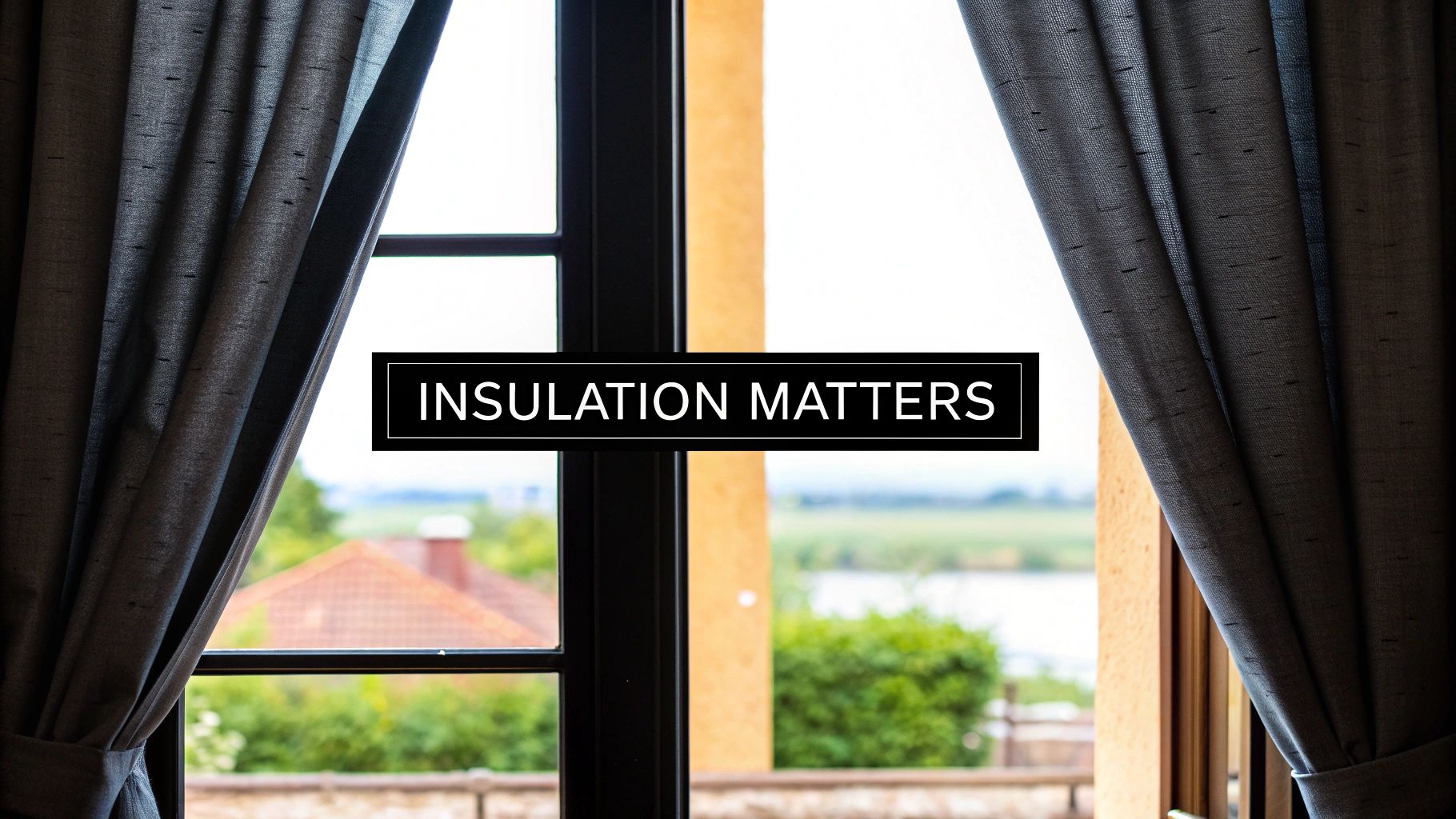
Window condensation can be a real nuisance. Fortunately, several do-it-yourself solutions can offer immediate relief without breaking the bank. These fixes range from simple tweaks to your daily habits to installing inexpensive materials. You can begin tackling the problem today!
Window Insulation Kits: A Cost-Effective Barrier
Window insulation kits provide a practical approach to reducing condensation and boosting energy efficiency. These kits generally consist of plastic shrink film applied to the window frame, creating an insulating barrier of air. This extra layer of insulation helps keep the interior pane warmer, minimizing condensation. Exploring innovative solutions like those found in a smart city experiment can often lead to a more comfortable home environment.
-
Installation: Installation is typically a breeze. Clean the window frame, apply double-sided tape, and then carefully apply the plastic film, smoothing out any wrinkles. A hairdryer helps shrink the film taut, creating a tight seal.
-
Effectiveness: While not as effective as window replacement, these kits can dramatically reduce condensation on single-pane windows and improve the performance of older, less efficient ones.
Moisture-Absorbing Products: Soaking Up Excess Humidity
Moisture-absorbing products, like desiccant dehumidifiers, can be placed near problem windows. These products absorb excess moisture from the air, lowering the relative humidity near the window and reducing condensation.
-
Placement: Position moisture absorbers near windows susceptible to condensation, particularly in areas with poor air circulation.
-
Effectiveness: These products are best in smaller, enclosed spaces and as a supplement to other prevention methods. While they won’t single-handedly solve widespread condensation, they offer localized relief.
Anti-Condensation Sprays and Coatings: A Temporary Fix
Anti-condensation sprays create a temporary hydrophilic coating on the window. This coating helps water droplets spread into a thin, less noticeable film. Keep in mind, the effectiveness is temporary and requires frequent reapplication.
- Durability: These sprays are a short-term solution, not as durable as other methods. Reapplication is frequently needed.
Comparing DIY Solutions: Cost, Effectiveness, and Ease of Installation
To help you choose the right solution for your needs, the following table compares different DIY methods based on cost, effectiveness, installation difficulty, and durability.
DIY Window Condensation Prevention Methods Comparison: This table compares the cost, effectiveness, ease of installation, and durability of various DIY window condensation prevention methods.
| Prevention Method | Average Cost | Effectiveness Rating | Installation Difficulty | Durability |
|---|---|---|---|---|
| Window Insulation Kit | Low | Moderate | Easy | Moderate (One Season) |
| Moisture Absorbers | Low | Low to Moderate | Easy | Varies (depending on type) |
| Anti-Condensation Spray | Low | Low | Easy | Low (days to weeks) |
As the table shows, each DIY solution has its own set of strengths and weaknesses. Choosing the right approach depends on your specific situation and budget.
Combining methods often delivers the best results. Using a window insulation kit with a moisture absorber can provide a more complete solution than using either method alone.
When to Call the Pros: Identifying and Solving Severe Condensation Issues
DIY solutions can often handle light condensation on your windows. But sometimes, the problem is bigger than a quick wipe-down. This section will help you recognize when condensation signals a more serious issue, guiding you towards professional solutions that offer long-term value.
Recognizing the Red Flags: Beyond Everyday Condensation
A little condensation is normal, especially in humid climates. However, some signs indicate a much larger problem. For instance, if you see persistent fogging between the panes of your windows, a dehumidifier won't help. This usually means the window seal has failed, trapping moisture inside. This trapped moisture can even lead to mold growth.
Another warning sign is water damage around the window. Look for warped window frames, stained walls, or bubbling paint. This type of damage indicates a significant moisture problem that could compromise your home's structure. You might be interested in: Upgrade your home with triple-pane windows.
Professional Services: Investing in Expertise
Several professional services can address serious window condensation. A comprehensive home energy audit is an excellent first step. Certified energy auditors can identify moisture sources, locate insulation gaps, and evaluate ventilation effectiveness. They then create a personalized plan to improve your home's energy efficiency and reduce condensation.
Window restoration specialists provide targeted solutions for damaged windows. They can repair or replace failed seals, eliminating the trapped moisture between panes. For severely damaged or very old windows, full window replacement might be the most effective long-term solution.
Choosing the Right Professional: Credentials and Experience
When hiring a professional, look for specific qualifications and experience. Certifications from organizations like the Building Performance Institute (BPI) demonstrate expertise in energy efficiency and moisture control. Ask about their experience with window condensation issues, and request references. Avoid general contractors without specialized knowledge in moisture management or window restoration.
Cost Considerations: Balancing Investment and Long-Term Savings
Professional services have costs associated with them. A home energy audit typically runs between $300 and $600, while window seal repair costs $50 to $200 per window. Full window replacement represents a larger investment, ranging from $300 to $1,000 per window, depending on the type and size.
While these costs might seem high, consider the potential long-term savings. Reduced maintenance, improved energy efficiency (leading to lower utility bills), and preventing structural damage often outweigh the initial cost. Plus, a professional solution gives you peace of mind, knowing the issue is resolved effectively and permanently.
Evaluating Quotes: Ensuring Quality Work
When comparing quotes, don't automatically choose the lowest price. Compare the scope of work, the materials used, and the contractor's experience. A detailed quote should itemize every part of the project, from initial assessment to follow-up.
Ask for a written warranty covering both materials and labor. This protects you if the work is faulty or the materials fail prematurely. Finally, ask questions! A qualified professional will gladly explain their process and address any concerns.
Ready to eliminate window condensation for good? Gladiator Window and Doors offers high-quality, energy-efficient windows and doors at competitive prices. Our custom-made, thermally rated products reduce condensation and improve home comfort. Visit Gladiator Window and Doors today for a free estimate and see the difference quality craftsmanship and value can make.

















